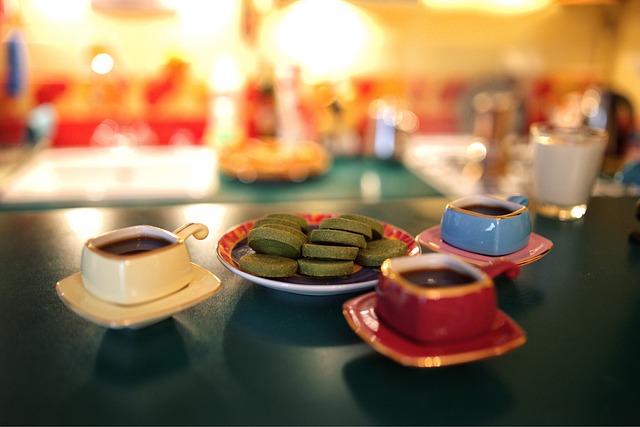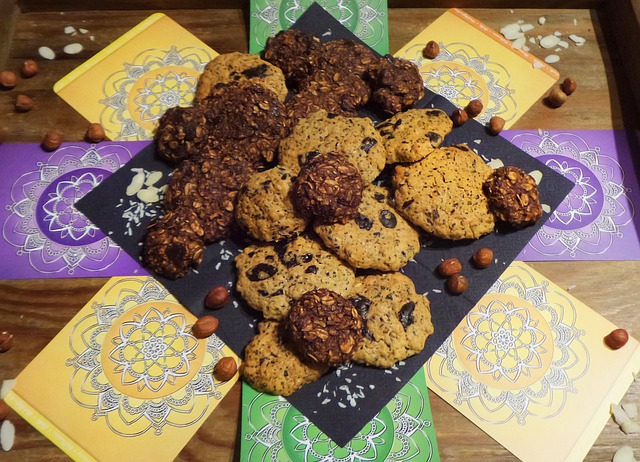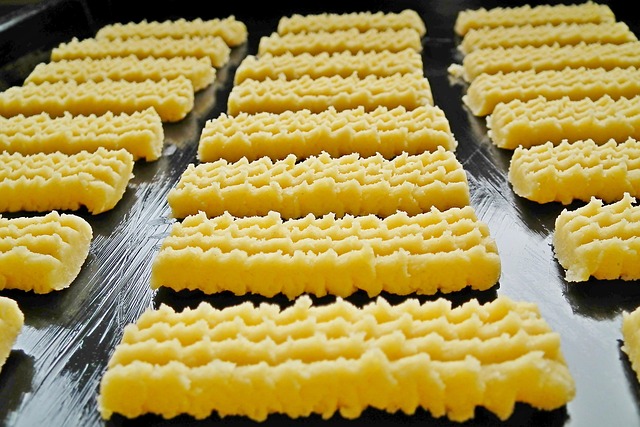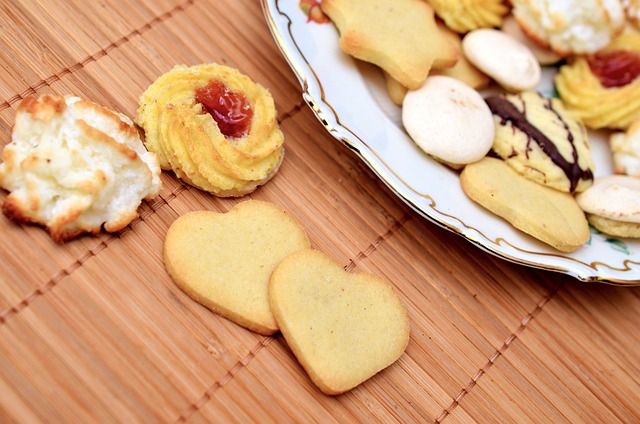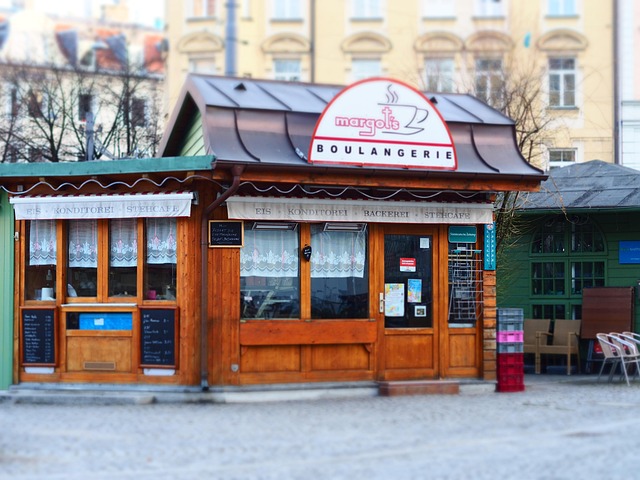Direct-to-food printing has revolutionized the culinary landscape, especially in custom cookie creation. This cutting-edge technology uses advanced inkjet printing to apply intricate designs directly onto edible surfaces, offering endless creative possibilities. Popular among bakeries, caterers, and individuals, it enables high-resolution, vibrant images on cookies for various occasions. By democratizing design, direct printing empowers culinary artists to express their talents and create visually stunning, personalized treats, making it a game-changer in the food industry. Essential materials include food printers with edible ink, custom dough, and nozzles, while strict safety guidelines ensure quality and safety. In a competitive baking industry, this technology caters to consumers' demand for unique, customizable cookies.
Direct-to-food printing is transforming the culinary landscape, offering unprecedented design freedom for confectioners. This revolutionary technology goes beyond traditional decoration, enabling the creation of truly custom cookies and other edible treats. From intricate patterns to personalized messages, direct food printing promises to elevate baking businesses and satisfy customers’ ever-evolving demands for unique, visually stunning desserts.
In this comprehensive guide, we’ll explore the ins and outs of direct-to-food printing, from understanding the technology to mastering its applications in crafting those perfect, one-of-a-kind custom cookies.
- Understanding Direct-to-Food Printing: A Revolutionary Technology
- The Custom Cookie Conundrum: Unlocking Infinite Design Possibilities
- How the Process Works: From Design to Delicious Creation
- Materials and Equipment: What You Need for a Successful Print
- Ensuring Quality and Safety: Best Practices for Food Printing
- Applications and Trends: Elevating Baking Businesses with Direct Printing
Understanding Direct-to-Food Printing: A Revolutionary Technology

Direct-to-food printing is a revolutionary technology that has transformed the culinary landscape, especially in the realm of custom cookies. This innovative process allows for precise and intricate designs to be applied directly onto edible surfaces, opening up endless possibilities for creativity in baking and confectionery arts. Unlike traditional methods, which often involve hand-painting or stamping, direct-to-food printing utilizes advanced inkjet technology to produce high-resolution images with vibrant colors and intricate details.
This cutting-edge approach has gained significant traction in the food industry, particularly among bakeries, pastry shops, and event caterers. With direct-to-food printing, businesses can offer personalized and customized cookies, catering to diverse consumer preferences and special occasions. From celebrating birthdays to promoting brands, this technology enables the creation of unique, visually appealing treats that not only delight the eyes but also satisfy tastes, making it a game-changer in the way we perceive and interact with food.
The Custom Cookie Conundrum: Unlocking Infinite Design Possibilities
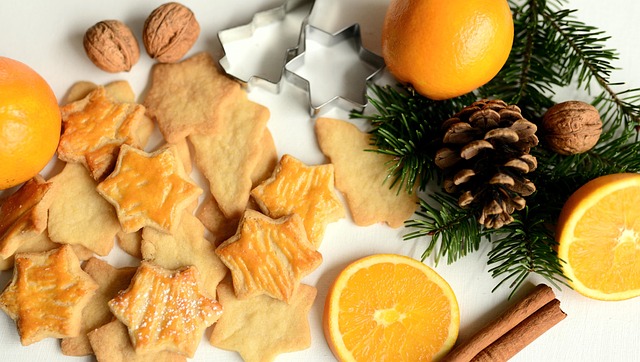
The world of custom cookies has been transformed by direct-to-food printing, unlocking a seemingly infinite canvas for culinary creativity. This technology allows for intricate designs, personalized messages, and unique flavor combinations that were once unimaginable on these beloved treats. From simple names and birthdays to elaborate artworks and logos, the possibilities are only limited by one’s imagination.
Direct printing onto cookies offers a game-changer for bakeries, catering services, and even individuals looking to create special, made-to-order desserts. It democratizes cookie design, enabling folks to showcase their artistic flair or celebrate occasions in truly remarkable ways. With precise, high-resolution printing, every detail can be perfectly replicated on these delicate treats, ensuring they’re not just delicious but also visually stunning.
How the Process Works: From Design to Delicious Creation
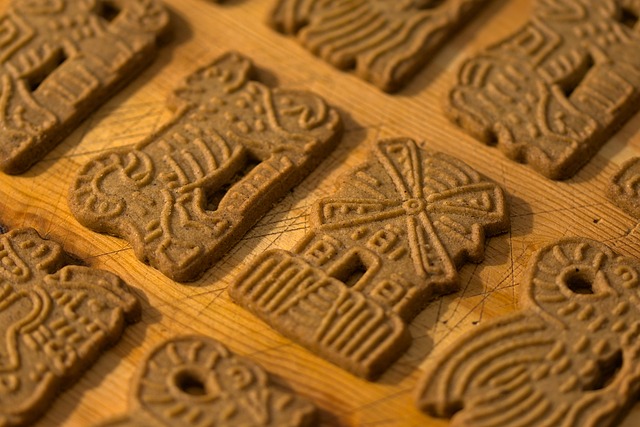
The direct-to-food printing process revolutionizes culinary art by offering a way to create stunning, customized treats, especially in the realm of custom cookies. It all starts with a design—an artist’s sketch or a digital creation. This design is then digitally transferred and meticulously translated into edible ink, ensuring vibrant colors and intricate details. The magic happens when this ink is precisely deposited onto rolling pin-like surfaces, carefully spread, and baked to perfection.
Through advanced printing technology, the process allows for personalized messages, logos, or artistic patterns to be imprinted on cookies, making each creation unique. This innovation not only captivates the senses but also offers endless possibilities for caterers, bakeries, and individuals looking to make a lasting impression with their culinary offerings, from special occasions to corporate events.
Materials and Equipment: What You Need for a Successful Print
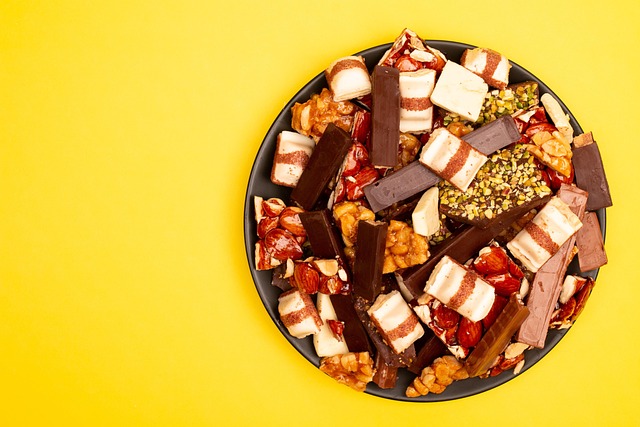
Direct-to-food printing, particularly on custom cookies, has gained popularity for its ability to create visually stunning and personalized treats. To embark on this culinary art form, several key materials and equipment are essential. For starters, you’ll need high-quality food printers designed specifically for cookie decoration. These printers use edible ink that can produce vibrant colors and intricate designs.
Complementing the printer is a selection of cookies, preferably those with a smooth surface to ensure optimal printing results. Custom cookie dough allows for complete design freedom. Additionally, you will require various nozzles and tips to achieve different printing styles, from simple text to complex artistic patterns. Edible coloring agents and flavorings are also important to add pops of color and enhance the taste experience.
Ensuring Quality and Safety: Best Practices for Food Printing

Ensuring quality and safety is paramount in the direct-to-food printing process, especially when creating custom cookies or other edible products. Best practices involve adhering to strict food safety guidelines and regulations. This includes using only approved food-grade inks and materials that meet necessary standards for direct food contact. Regular cleaning and maintenance of printing equipment are essential to prevent cross-contamination. Additionally, implementing robust quality control measures at every stage, from ink preparation to final product inspection, ensures consistent quality and taste.
Proper storage conditions also play a crucial role in maintaining safety and quality. After printing, custom cookies should be stored in secure, sealed containers to protect them from environmental contaminants and ensure their freshness. It’s important to keep printed foods chilled or frozen until they are ready for consumption, as recommended by food safety authorities. By strictly following these best practices, businesses can offer consumers high-quality, safe, and delicious custom cookie creations.
Applications and Trends: Elevating Baking Businesses with Direct Printing

In the realm of baking and confectionery, direct-to-food printing has emerged as a game-changer, revolutionizing the way businesses create and personalize their products. This innovative process allows for precise and intricate designs on various food items, particularly custom cookies, which have become a prime canvas for artistic expression. From simple logos to complex illustrations, direct printing offers endless possibilities for bakeries to differentiate themselves in a competitive market.
Trends suggest that consumers are increasingly demanding unique, customizable treats, and direct-to-food printing satisfies this desire. It enables baking businesses to cater to specific events, themes, or even individual preferences by offering personalized cookies. Whether it’s a corporate event, wedding, or a child’s birthday party, custom cookies with tailored designs have become a popular choice. This technology not only enhances the visual appeal of baked goods but also adds a layer of personalization that resonates with customers, fostering a memorable experience.
